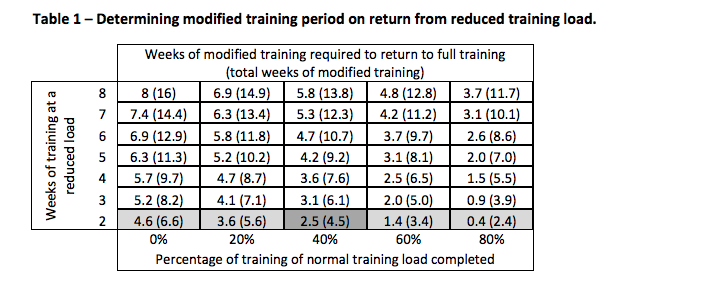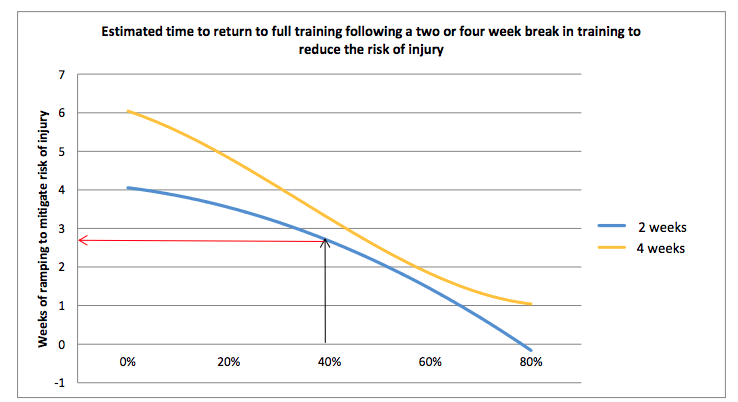How To Modify Training To Account For Illness, Injury or The Busy Schedule

One of the most difficult things for runners is knowing how to adjust their training plan due to illness, injury, a sleep in or the busy nature of everyday life. We often need to modify training plans to account for various disruptions to training or routine, yet still need to be wise to avoid injury and make the most out of the training we do. Today we jump into some options for how to adjust and modify your training plans on the go.
Whether you are planning to run a 5km race all the way up to an ultramarathon, many runners are following a plan. This may be loosely structured for some or quite detailed for others. These plans if not self devised are often done through an online program or under the guide of a coach. These training plans often have worked out a gradual increase in running load that builds the individual towards the end goal race, specific to the race time and distance. A typical program will have a number of weeks increasing in volume, before a light week, then repeat the process with a slightly higher total volume. A large contributing factor to running injuries is overload (too much, too quick, too soon), with many factors influencing why an overload may occur. A good training plan aims to balance improvements in performance with a gradual progression in loads to avoid injury. So what do you do when you need to modify the plan? There are a number of different options on how we can best manage various interruptions to continue to improve fitness and minimise risk of overload.
What To Do When You miss a Session:
You miss a session, you miss the session. It is lost into oblivion there is no catch up sessions. This is an approach I’ve heard many coaches take. As a runner, this idea annoys me but as a Physio I totally understand it. The safest option is just to let it go, this way your plan needs little modification and volume isn’t likely to differ to much. You also don’t risk cramming more volume into a smaller window or place harder sessions back to back (instead of an easy session). The exception may be for your long run, if you miss your long run, it can replace a speed session or easy run later that week, followed by the typical rest or recovery sessions from your long run. This helps ensure that you don’t make a large jump in long run time or distance if it increases week to week in your program. Alternatively the upcoming long run will be the one you missed and not the higher volume one from your training plan.
When You Miss A Week:
A missed week (or near there of) is a significant volume of training to miss. Any volume greater than 4 days off should require some modification to the training plan. (1) Jumping straight back into the same volume as before the week off is often a challenge for the runner. One of the key variables in modifying a training plan is to consider intensity and the total weekly volume. This can include just distance run, time run and as we have spoken about previously on the blog considering some sort of measure of internal workload such as the acute chronic workload ratio. For more information on how to quantify this workload find this blog here.
It can take 3-4 weeks of gradual increases in training load to return to normal training after a week off. The reasoning behind this is that you have a sudden increase in acute training load on return to running. There is an increased risk of injury and illness on return to training, if the volume, intensity and frequency of training are not well managed. Some examples of increased likelihood of suffering an injury are shown below (2).

Missing 2 Weeks of More:
The following is taken from a paper from the Australian Institute to help guide athletes return to activity after time out of activity. This gradual return to full activity may help reduce new injury, re-injury and or illness.



In the example from the graph above after having 2 weeks of reduced load (40%) the athlete would require a 2.5 weeks of incremental training to return to full training. Returning quicker than this period exposes the athlete to increased risk of injury. Therefore the time out of full training is 4.5 weeks.
Another example from the table above, would be having 3 weeks off, with zero running. Using the first column in the table above this would require 5.2 weeks to return to normal training, which when including the 3 weeks off, would mean there is 8.2 weeks before full training volume and intensity would be resumed.
A Few Extra Notes
- If you are following a plan given to you by a coach, ask them what you should do! They may have their own preferences on how to restructure your training and it never hurts to ask.
- Listen to your body, plans do not need to be blindly followed but are malleable to the needs and response of the individual. Sometimes extra rest days are needed, light weeks are needed or repeating the same volume for a few weeks can be needed before progressing.
- Higher levels of fitness are protective against changes in volume. It bares note that a missed 10km session will mean a lot more for someone running 30km a week versus 100km a week.
- It’s not all about training load; other factors such as sleep, nutrition, stress, fatigue, past injury history and aerobic fitness will all influence one’s ability to handle the stresses of training and chances of illness injury.

Lewis Craig (APAM)
POGO Physiotherapist
Masters of Physiotherapy
Featured in the Top 50 Physical Therapy Blog
References:
- Purdam, C., Drew, M. K., Blanch, P. D., Champman, D., Gabbett, T. J., Gore, C., … & Raysmith, B. (2015). Prescription of training load in relation to loading and unloading phases of training. Bruce, Australia: Australian Sports Commission.
- Blanch, P., & Gabbett, T. J. (2016). Has the athlete trained enough to return to play safely? The acute: chronic workload ratio permits clinicians to quantify a player’s risk of subsequent injury. Br J Sports Med, 50(8), 471-475.








